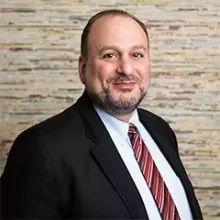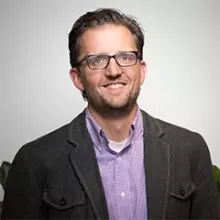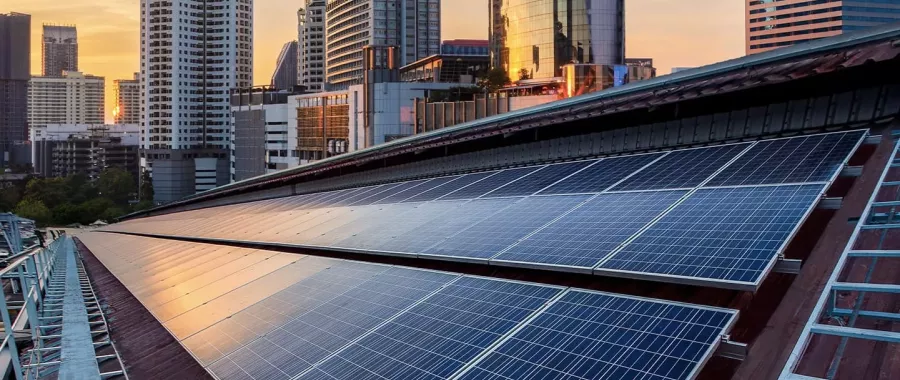Net Zero & Passive House
SOCOTEC’s long experience with net-zero and low-energy buildings indicates that the approach has to be holistic, involving programming, massing, envelope, lighting, HVAC, and in the end, renewables. This works well with a staged approach – planning from the beginning for the end point.
The first step would be to decide whether the building program can include transition spaces that do not need to be conditioned at traditional comfort temperatures at all times.
Working with building massing, where permitted by the site, helps reduce the energy use. Criteria include an elongated shape that permits natural ventilation during swing seasons, reduction of core areas, fenestration predominantly toward south (with shading) and north
Net zero energy/net zero carbon require improvements of all building systems. A vigorous action toward highly efficient building envelope is essential – and the envelope must be considered in conjunction with the HVAC systems. Envelope results in a lower cost for HVAC improvements (be they simultaneous or at a later stage), if done strategically.
Not only that, but a high-performance envelope is essential to allow electrification of heating. Electric heating is relatively expensive, especially during very cold periods. Reducing heating load is therefore essential.

Talk to our experts
Envelope
Envelope consulting is one of the strong attributes of SOCOTEC, with its large staff that performs energy consulting, design assistance, construction inspections, post-occupancy trouble-shooting, and renovation and remediation of existing buildings.
Our experience spans literally all construction types, from all types of masonry and concrete, punched windows, window wall and curtain walls, as well as hybrids. We have deep experience with all construction techniques, starting from fabrication, and have taken hundreds of buildings from pre-design through final certificate of occupancy.
We have also seen many problems with existing buildings, and where necessary we apply that experience to avoid creating such problems – and where problems exist, to remedy them.
SOCOTEC’s professionals improve the efficiency of building envelopes, without creating moisture and façade durability problems – the latest being an essential aspect of highly insulated envelopes, and essential for swimming pools.
We have performed hundreds of detailed analyses of building systems in general, and also for a range of swimming pools.
- THERM
- Three-dimensional conduction
- Computational fluid dynamics (CFD)
- Moisture transfer analyses (WUFI)
Such analyses are essential for ensuring (a) that the envelope performs properly in its specific hygrothermal regime (gym, swimming pool, classrooms have different hygrothermal environments) and (b) that it actually delivers the desired insulating value.
In general, we prefer details where the insulation and dewpoint are outboard of the vapor-resistant layer (e.g, outboard of masonry). Anchors, shelf anchors, point connectors, girts, and others create thermal bridges through the insulation, but these bridges can be mitigated.
Insulation type and thickness is selected based on the composition of the exterior wall and of the space available – from mineral wool to aerogels (R >9/inch) and to vacuum insulation at roofs. (Spray fiberglass, spray cellulose and spray foams can also be used for specialized purposes.)
SOCOTEC has performed such analyses on the full spectrum of buildings, from new to old, from modern to landmarked. As necessary, their experts use tools such as quick THERM modeling, more detailed three-dimensional conduction modeling, WUFI moisture analyses and computational fluid dynamics analyses.
Lighting
Lighting is a fast-moving field. With a specialized PhD on staff, SOCOTEC has been always tuned to energy-saving strategies, both traditional and evolving. For instance, during the past year we have investigated for office buildings a broad application of Power-over-Ethernet technologies in conjunction with localized HVAC controls – and as an option, the more traditional technology of addressable luminaires.
SOCOTEC projects have achieved 0.6 w/sqft for office spaces, 0.4 w/sqft for classrooms, and an additional 20% reduction via dimming and occupancy sensors. Individual controls (where feasible for open-plan setups) may well contribute another 5% savings.
HVAC Distribution
SOCOTEC has investigated – and applied – energy efficient measures for all HVAC system types. For low-energy/low-carbon systems, we have analyzed techniques such as the following:
100% Outside air systems with modulation per occupancy (post-Covid), high filtration and heat exchangers are an attractive option for assembly sand sport paces. This system works best in conjunction with a thermally-effective envelope (new or renovated, as noted above) and low lighting density. It is enhanced in a building that has significant thermal mass. The latter can be the result of the building construction itself, or can be augmented with room-temperature, phase-change materials that can be easily located above a hung ceiling or in the wall furring.
However, a typical VAV system can still be very effective. Whether 100% OA or typical re-circulating systems, the fan systems should use very low w/cfm. For instance, VAV boxes and DOAS boxes can have a single coil that alternately provides both cooling and heating, with less than 0.2 w/cfm.
HVAC Heating and Cooling
For electrification, VRF technologies have been used for an appreciable period of time. Air-to-water heat pumps have emerged as a desirable option during the past few years, even though the technology is not new. What is new are the higher efficiencies, and the fact that some of these pumps maintain most of their capacity at very low temperatures, below design conditions.
SOCOTEC has performed hundreds of analyses for optimization of such systems, including the balance between low hot water temperature (for higher efficiency of the heat pumps) vs pumping and fan energy. The balance is building-specific, with higher heat pump efficiency being determinant where the building has relatively low summer use (as in a school). A more balanced approach is necessary where fan and pump use are significant over summer. For instance, a leaving hot water temperature of 95F results in high efficiency for the heat pump, but overall higher electricity use than 100-110 F leaving hot water.
Air-to-water heat pumps – and geothermal systems -- also work very well with radiant floor and radiant ceilings, that are part of one of the latest SOCOTEC projects.
We expect that these systems will be considered for the project, and that their selection and size will be influenced by the highly performant envelope.
Controls
In a COVID/post-COVID regime, the air quality is even more important than before. SOCOTEC has analyzed various methods for providing high IAQ with minimal effect on energy use. One method could be to provide a higher OA cfm/person than Code minimum, but modulate the outside air based on occupancy.
High filtration, with MERR 13 to 15, is another option, that can be in conjunction with the above.
SOCOTEC has studied the effect of providing UVGI for offices and hotels, and found the technology effective when compared to an increase in outside air rates.
We will work with the design team and DDC in selecting an appropriate technology that does not negatively affect the energy efficiency, while providing superior IAQ.
Renewables
Building-integrated photovoltaics can play a significant role for layouts with large roofs and solar access. Wind can also be useful for some locations. Since large wind installations are problematic in densely populated areas (noise, ice), for most individual buildings wind will contribute to the solution in a relatively small way.
Geothermal cooling/heating is possible SOCOTEC has consulted on many such systems and believes that the risk taken with open loop or standing column is relatively high. A closed loop, be it on site or foundations-integrated, is less exposed to environmental factors than the other systems.
Community Systems
Large scale geothermal systems are feasible, as demonstrated at Richard Stockton College and as currently planned at the Princeton University. In that context, large-scale renewable systems are also feasible, including wind. Even cogeneration systems may have a role, if heat is used for hot water heating and domestic hot water – and if the electricity is generated with fuel cells. This set of requirements necessitate a mix of uses that include DHW consumption during summer.
Bringing it all together
SOCOTEC believes that zero-energy, zero-carbon buildings require that planning for the end result is performed from the beginning, in a holistic manner.
Net Zero
SOCOTEC has pioneering and extensive experience with energy-efficient buildings, and in particular with net-zero energy, low-carbon buildings - with all components: envelope, lighting, HVAC, electrical, clean cogeneration, renewables.
Our experience with Net Zero includes:
- We have provided consulting on the first US Net Zero building, Oberlin College’s Adam Joseph Lewis Center for Environmental Studies.
- We have performed Net Zero studies for major department stores and government office buildings.
- We have created a Net Zero report for NYSERDA.
Passive House
Always staying at the forefront of the industry with sustainable technology, SOCOTEC has recognized the growing audience and their desire for the Passive House method of building. In-turn, SOCOTEC has invested in two of its team members to become Certified Passive House Consultants (CPHCs).
Our experience with Passive House includes:
- We have worked closely with the entire team at Cornell Tech’s Passive House residential tower
- We have studied the effect on energy use of applying Passive House principles to education projects.
- We have extensive experience in THERM modeling, which is required as part of the PHIUS submission.
- We have energy modeling experience well beyond WUFI Passive, which is the minimum required for PHIUS certification. We can do WUFI passive, but we can also do other modeling that can help evaluate the actual expected payback of energy saving measures.
- We have expertise in Green Zoning requirements and have successfully gotten the Green Zoning bonus.
- We are approved MPP providers and can help projects earn a little bit of money to offset the additional costs of PHIUS inspections (both require blower door tests).
- We can help find the most cost-effective way to meet the sustainability & energy requirements for HPD funding.
Want to know more about our Net Zero & Passive House services?







